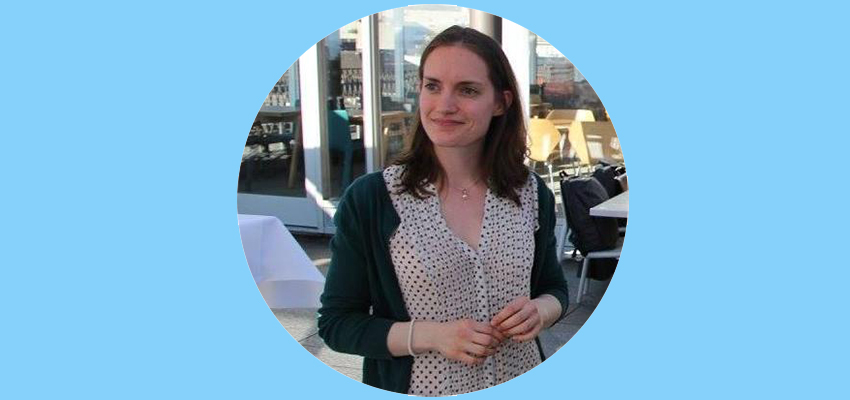
A German raised in Geneva, Maren Meinhard, who turned 25 a few days before CMS did, is a PhD student at ETH Zurich. Her proximity to the laboratory played a big role in influencing her to study particle physics.
“I grew up in the Geneva area which is why CERN was familiar to me since I was born. In 2004 I went to the Open Days for CERN’s 50th Anniversary. Even though it was a long time ago, I remember that they made some ice cream with liquid nitrogen, which was the first time I saw that, so it was really fascinating. This event also inspired me to go into particle physics. Later, I started my bachelor’s studies in physics at EPFL in Lausanne and then went to ETH Zurich for my master’s degree, where very interesting lectures about particle physics reignited my interest in it.”
It was when she started working on her master’s thesis that Maren joined CMS, performing data analysis on the Higgs boson. As part of her doctoral studies, she has been involved with the upgraded Pixel detector of CMS, which was installed at the beginning of 2017.
“A few colleagues and I were responsible for the qualification of the modules that were installed in the detector. I also did some radiation-hardness studies on the read-out chip that was used for those modules. My contribution to the project was quite important, because even if you have a great cooling system and read-out electronics but the modules themselves are not working properly, the whole effort is in vain and the detector will not perform well. The most rewarding part of my work was however the study of the radiation hardness of the read-out chip. The Pixel detector has been inside CMS for a few months, so my studies are now becoming relevant and valuable information can be gained from it to understand how the detector is performing, now that it has already accumulated some radiation damage.”
Maren appreciates the value of working in an international setting, having herself been raised in an international city like Geneva.
“I think it’s really inspiring to see so many people from different nationalities, backgrounds and cultures working together. We had a collaboration meeting with the Pixel community shortly before the detector was installed and it was great to see how everyone collaborated on the same team to achieve our common goal of constructing a new Pixel detector for CMS.”
Although she wasn’t involved with particle physics at the time, Maren also credits the discovery of the Higgs boson in 2012 by CMS and ATLAS as an important moment for her.
“I had just started my third year of studies and had my first undergraduate course on particle physics when the discovery was announced. This was a very inspiring moment because it was one of the major breakthroughs we’ve had in the field in quite a few years. I was in Germany on holidays on the day of the announcement seminar and read about the discovery in the news. It’s really interesting that a particle which was discovered just five years ago is now standard knowledge and we’re doing precision measurements with it. It shows how fast this research field moves!”
Today, it is that very same particle that Maren is studying for her doctorate, continuing work she started when she was in her master’s programme.
“I’m looking for events where the collision between two protons produces a top quark and an anti-top quark in association with a Higgs boson, where the Higgs boson transforms into two bottom quarks. This is a very interesting channel because it’s the only production mode of the Higgs boson where the top quarks, which are produced along with it, are present in the final state and not only as virtual particles. This way we can directly probe the interaction strength between the top quark and the Higgs boson. It is an important measurement because it might show us signs of new physics that we don’t know about yet. So if we see a deviation from what we expect, it would be very exciting. I’m collaborating with a number of institutes on this analysis. We have some groups in Germany – Karlsruhe, DESY and Aachen – but also in the United States and China.”
Many years ago, before the LHC was constructed, Maren grew up next to where its predecessor – the Large Electron Positron collider (LEP) – operated. Today, she works on one of humanity’s biggest scientific projects.
“I saw CMS for the first time when I was working on my master’s thesis. The detector was open in its underground cavern. It was really inspiring, because I had just joined CMS and it was nice to see the detector whose data I was analysing. I then worked on building a new Pixel detector for CMS, which was installed earlier this year, and now I’m looking forward to analysing the data coming from the detector I helped build.”
As young as CMS…
A handful of CMS members were born around the time the CMS itself came into being. They are as old (or as young!) as the collaboration they are now a part of. To give you a unique point of view of what it means to scientists in the early stages of their careers to be involved in such a long-standing enterprise, we interviewed a few of them. Find out more about what brought them to particle physics, what they work on in CMS and what they look forward to in the years to come.